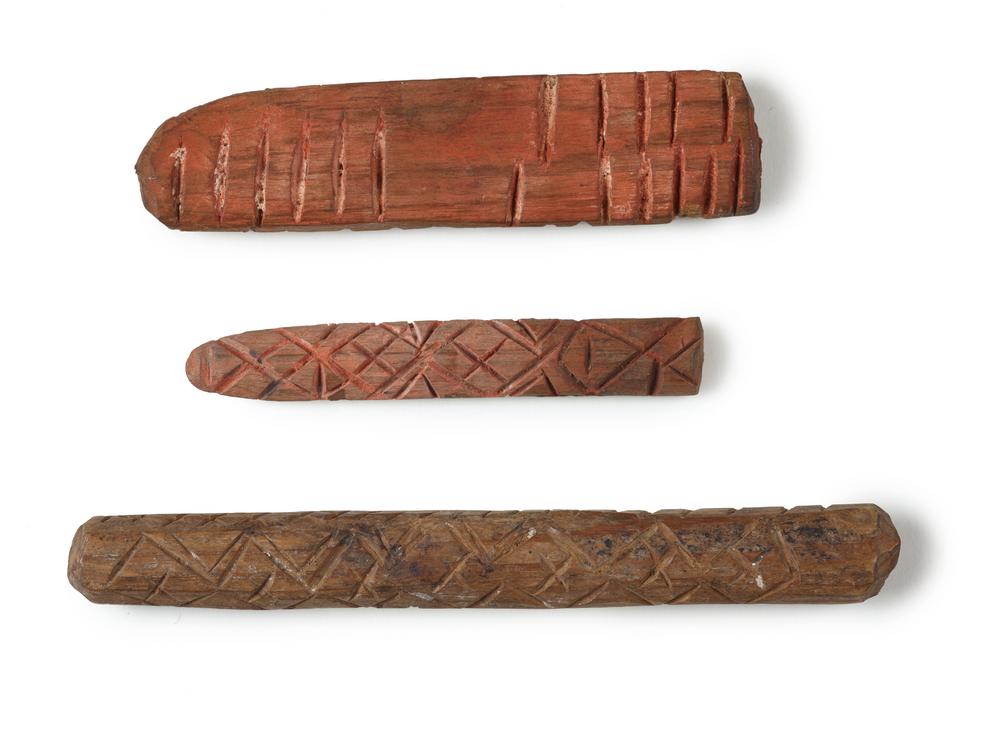Aboriginal Australians are the world’s oldest continuous living culture, yet one of their traditional cornerstones of communication – the message stick – is not widely understood today. Nevertheless, it’s a tradition that’s still wielded as a potent symbol of Aboriginal rights.
Message sticks are solid pieces of wood of varying length, typically between 10 to 30 centimeters (3.9 to 11.8 inches) in length, which feature an array of etched symbols, patterns, or drawings. They often come in cylindrical or flattened shapes.
Their purpose was to convey messages and “news” over long distances between different Aboriginal nations and clans, like an ancient telegram. They were passed from community to community by messengers, who could walk hundreds of kilometers to deliver them to a neighboring tribe. Once the messenger had arrived, they would recite the message orally while referring to the different patterns and marks on the stick.
This message might be an invitation, a declaration of war, or news of a death. Typically, it was a call to action, summoning neighboring groups for a meet-up. The message could be changed and built upon too. Like a public ledger, people would often add information to stick before passing it on to the next community or returning it to the original sender.
“The oldest man having made a message stick hands it to the old man nearest to him, who inspects it and, if necessary, adds further marks… Finally, the stick having passed from one to the other of the old men present is handed to the messenger,” explained an Australian anthropologist writing about the Wurundjeri people from the Melbourne area, according to Joys of Museums.
Three message sticks obtained near Cairns in the late-19th century.
However, the precise meaning of many of their symbols and patterns is not fully understood, not least because of the lack of modern research on them.
“It was only in the late 1880s that message sticks first became a subject of formal anthropological enquiry at a time when the practice was already in steep transition; very little original research has been published in the 20th century and beyond,” reads a 2019 study on message sticks by Dr Piers Kelly, a linguistic anthropologist at the University of New England, Australia.
“As a result, several issues concerning the history, function, and significance of Australian message sticks remain either unaddressed or unresolved to this day,” he added.
Dr Kelly goes on to explain that the European colonization of Australia was a devastating blow to this unique communication system. As the colonial frontier expanded in the 18th and 19th centuries, often by physical force and violence, inter-tribal networks were disrupted. The movements of Aboriginal people became actively restricted, making this form of long-distance communication almost impossible.
Furthermore, some colonial ethnographers had initially dismissed the message sticks as “the first primitive step towards a written language” or “primitive hieroglyphics”. Others snatched the artifacts and placed them in museum collections, stripping them of their purpose and meaning.
The tradition of message sticks still survives today, however. In 2020, the newly appointed senator Lidia Thorpe entered the Australian parliament chamber with a raised fist and carrying a large message stick with 441 painted marks. As a bold statement about the oppression of Aboriginal Australians, the lines signified each of the First Nations people who had died under police custody since 1991.
Source Link: Message Sticks Are Like The Wordless Language Of Aboriginal Australia
